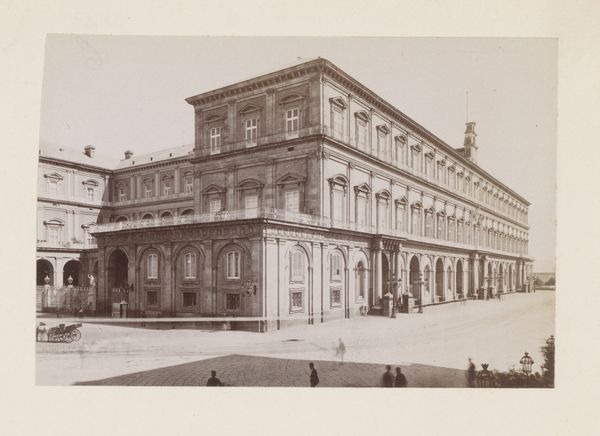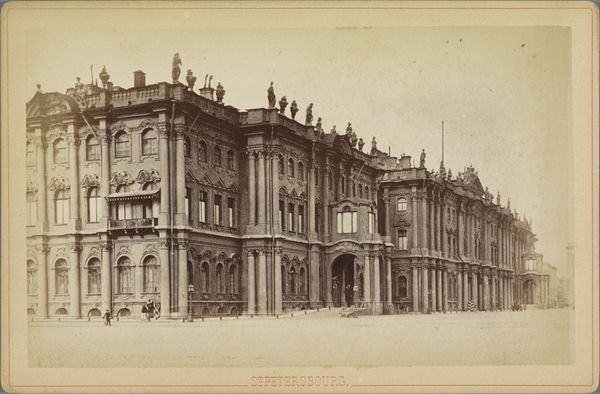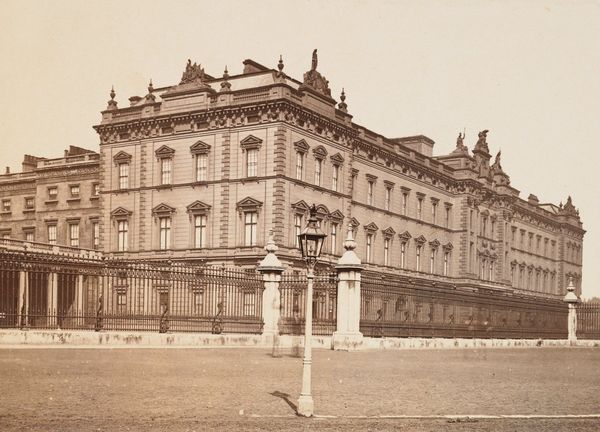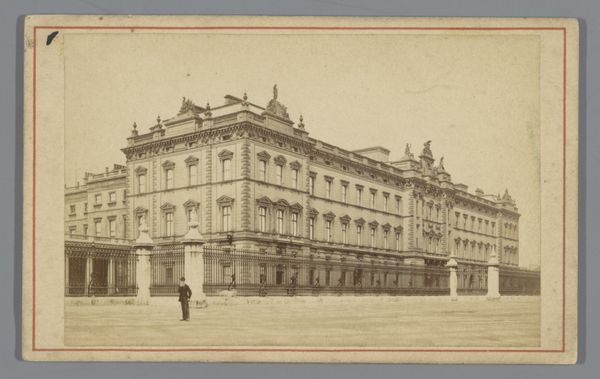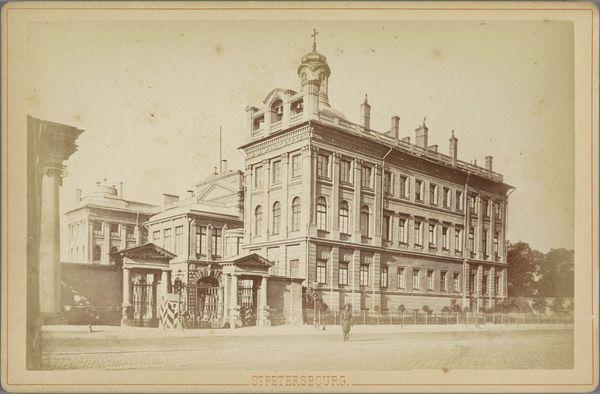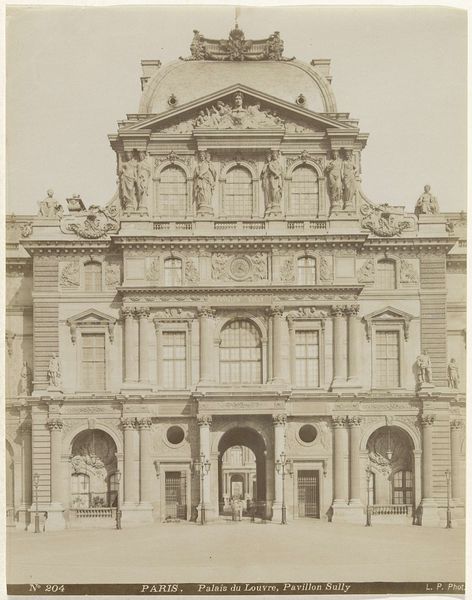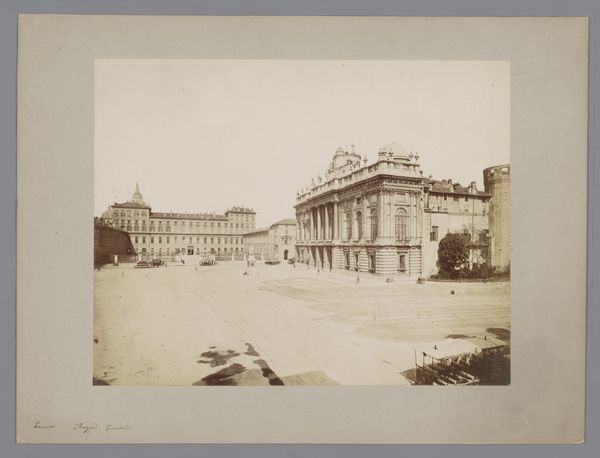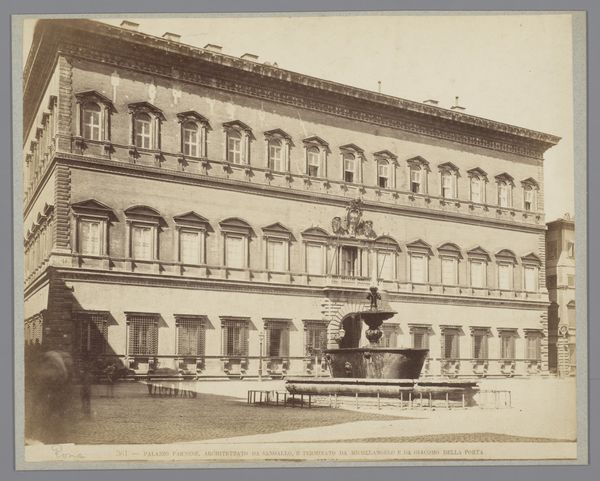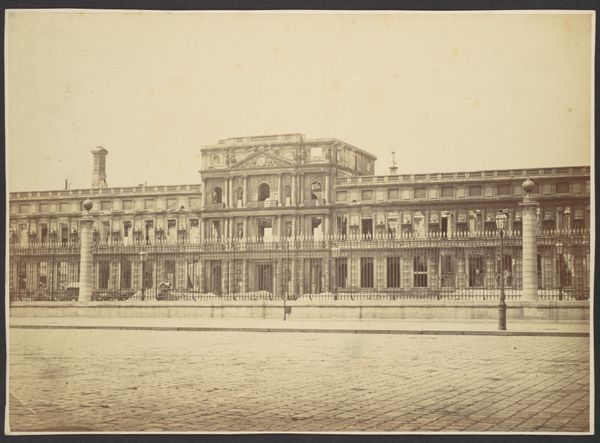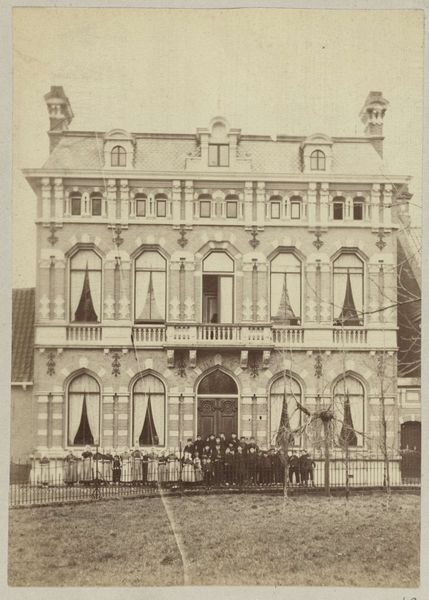
Dimensions: height 327 mm, width 420 mm
Copyright: Rijks Museum: Open Domain
Editor: Here we have a photograph from between 1880 and 1900, titled "Albrechtsbrunnen en het paleis Erzherzog Albrecht in Wenen, Oostenrijk," by Carl Haack. It has a very formal, almost staged feeling. What catches your eye when you look at this image? Curator: I'm immediately struck by how this photograph, beyond just documenting architecture, reinforces a specific socio-political order. The Neoclassical style, chosen to represent Vienna at this time, is no accident. How do you see this aesthetic choice reflecting power dynamics within the city during the late 19th century? Editor: I see the fountain and palace as symbols of imperial authority and wealth. Were these spaces intended to be exclusionary? Curator: Exactly! Consider how public spaces like this were designed and managed. Who had access? Who felt welcomed? Photography at the time often served to glorify these power structures, subtly shaping perceptions of who belonged and who did not. Do you think Haack's work challenged or perpetuated such structures? Editor: I hadn’t thought about it that way. It seems to reinforce them through its very composition. Is it possible to use this same perspective to encourage different approaches to our relationship with public monuments today? Curator: Absolutely. By unpacking these layers, we can critically assess contemporary urban spaces and question whose narratives are being privileged. Thinking about whose stories are not visibly celebrated in these older monuments encourages reflection on what a truly inclusive public space might look like in our own time. Editor: This makes me want to examine who *isn't* represented here. Curator: Precisely. It encourages a broader examination of identity and historical context.
Comments
No comments
Be the first to comment and join the conversation on the ultimate creative platform.


